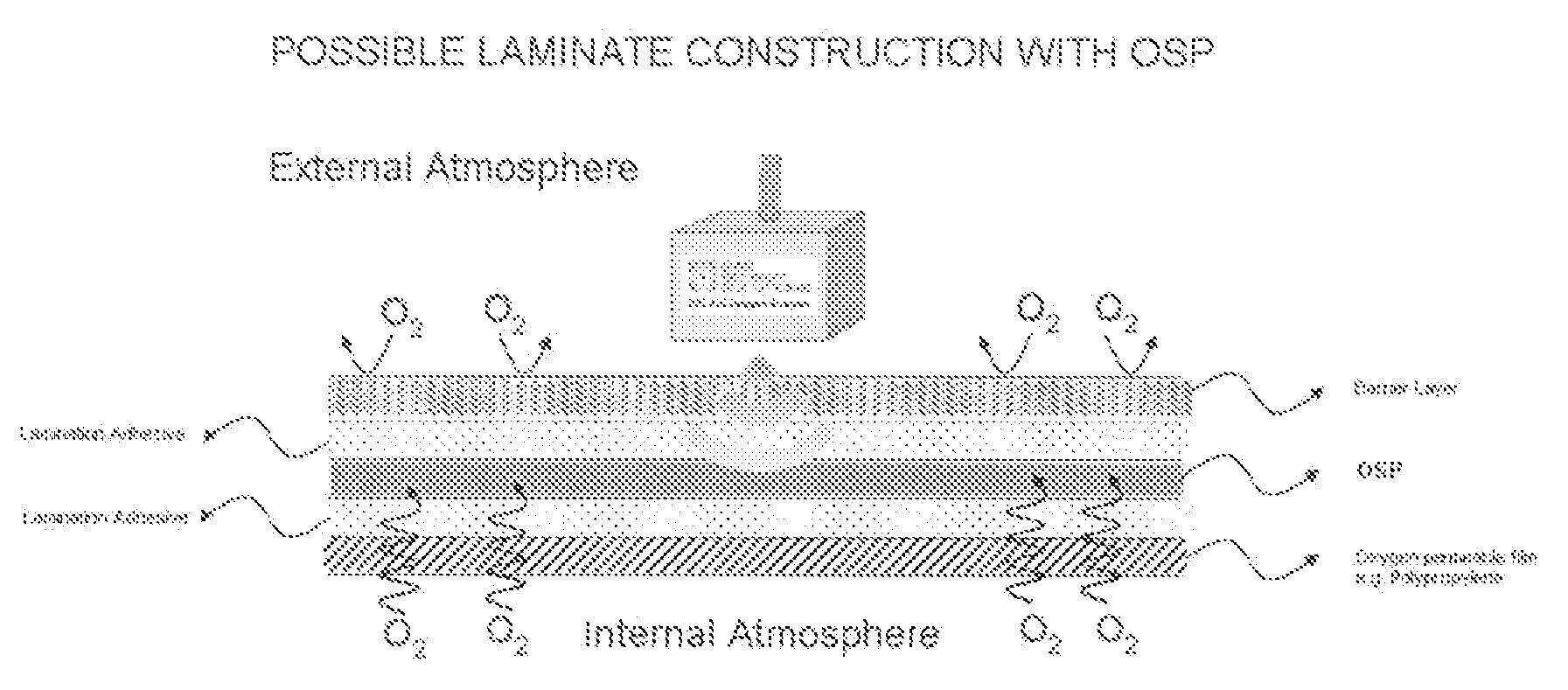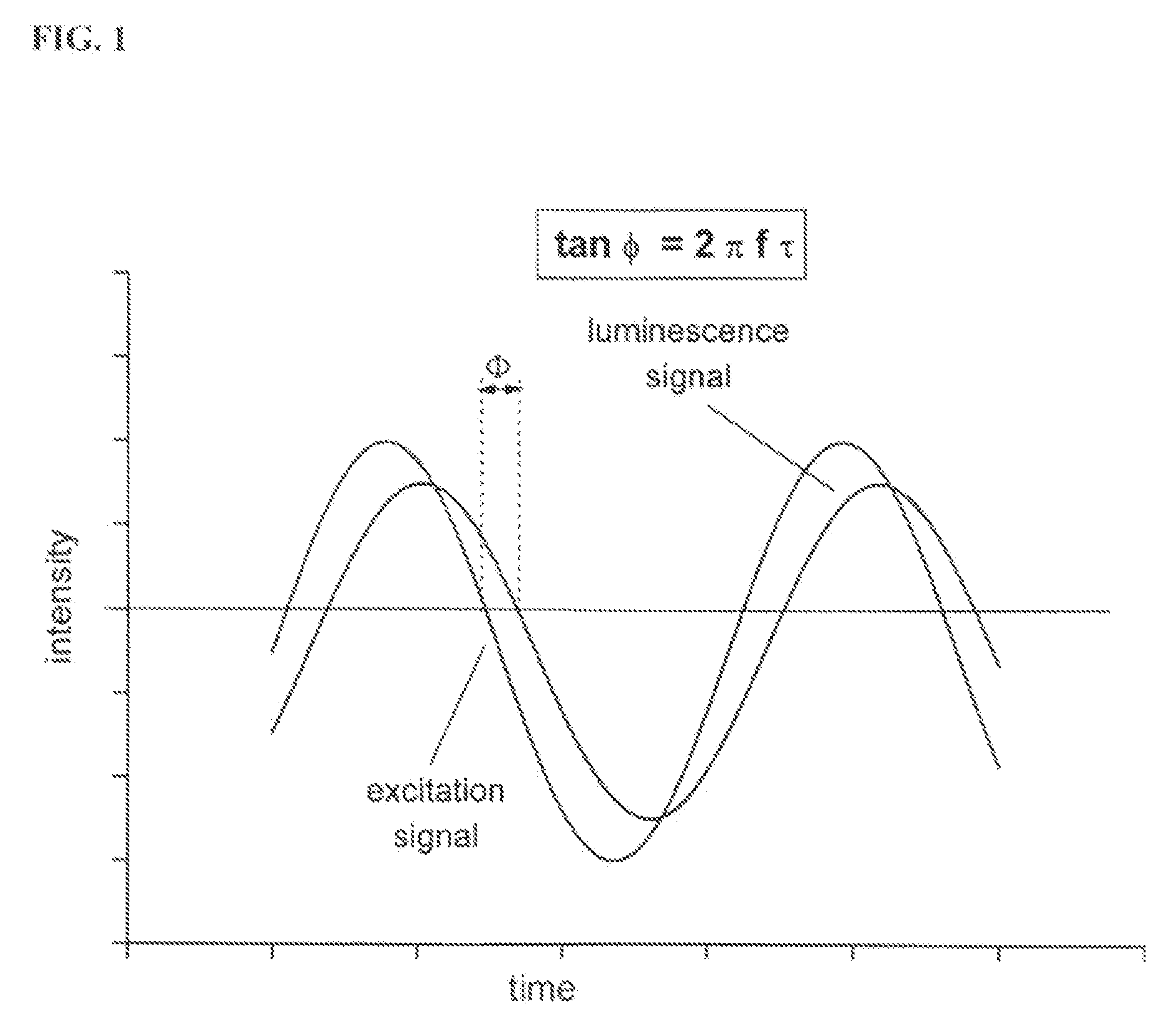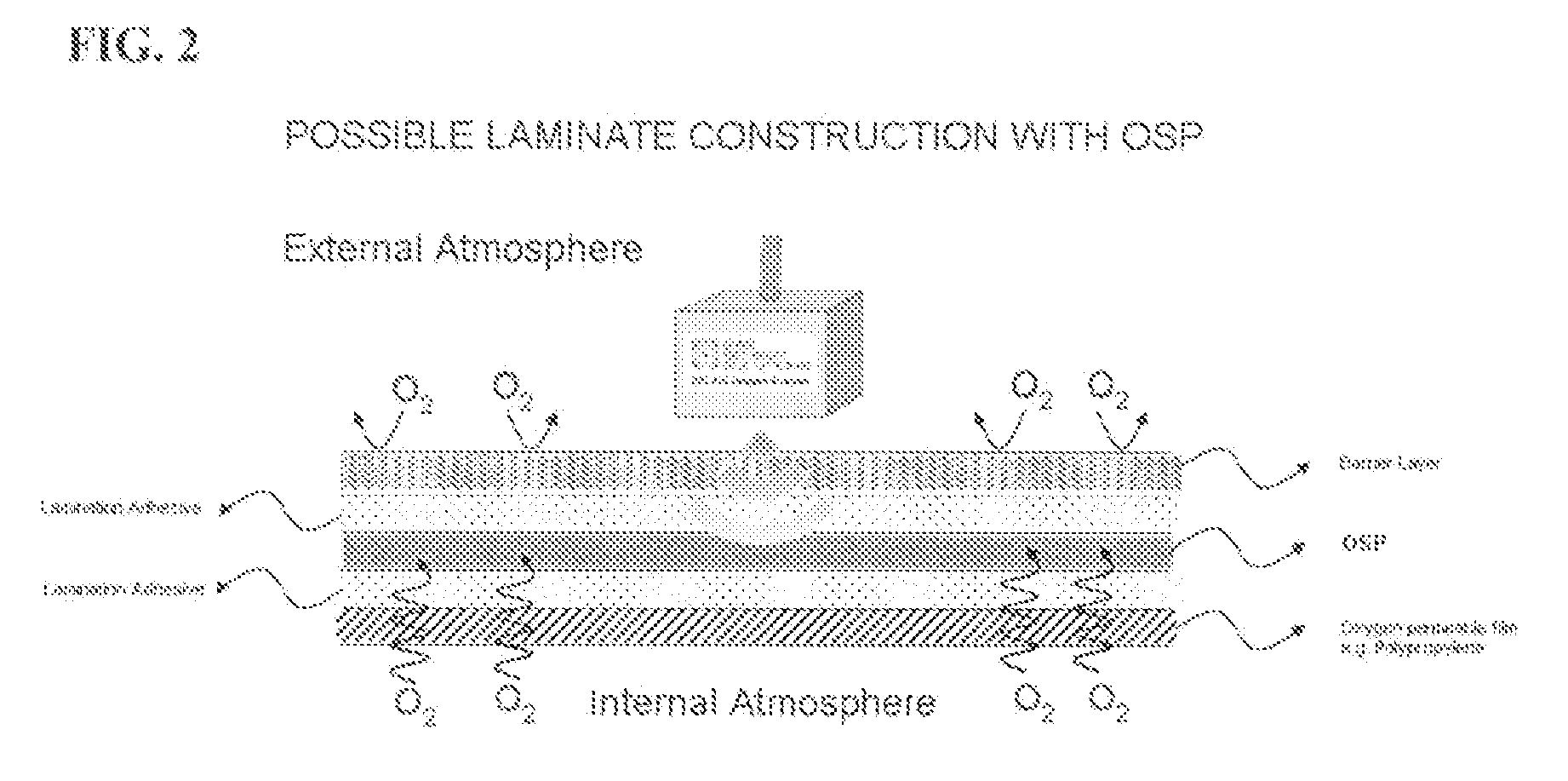Oxygen sensitive material, sensors, sensor systems with improved photostability
- Summary
- Abstract
- Description
- Claims
- Application Information
AI Technical Summary
Benefits of technology
Problems solved by technology
Method used
Image
Examples
example 1
Formulation of Oxygen Sensitive Masterbath Without Photostabilization by Pre-Mixing
[0057]1 g of Ru-tris (4,7-diphenyl-1,10-phenanthroline) dichloride (0.1%-wt of an overall mixture) was added to 20 g of powdered polypropylene PP (Total Petrochemicals PPC 5660) which had been pre-ground in a Wedco single stage grinding Mill. The mixture of powders was mixed in a Caccaia High Speed Turbomixer until homogeneity was achieved. The homogenous powder mixture is introduced to a small twin extruder / compounder at 210° C. (Dr Collin Twin Screw Compounder) to produce master batch pellets. These master batch pellets were used to compound the bulk polymer matrix.
example 2
Formulation of Photostabilized Oxygen Sensitive Masterbath by Pre-Mixing
[0058]A mixture of 1 g of Ru-tris (4,7-diphenyl-1,10-phenanthroline) dichloride (0.1%-wt of an overall mixture) and 0.05 g of TINUVIN 5236 was added to 20 g of powdered polypropylene PP (Total Petrochemicals PPC 5660). The polypropylene was pre-ground in a Wedco single stage grinding Mill. The mixture of powders was mixed in a Caccaia High Speed Turbomixer until homogeneity was achieved. The homogenous powder mixture is introduced to a small twin extruder / compounder at 210° C. (Dr Collin Twin Screw Compounder) to produce master batch pellets. These master batch pellets were used to compound the bulk polymer matrix.
example 3
Formulation of Oxygen Sensitive Masterbath Without Photostabilization by Split-Feed Process
[0059]1 g of Ru-tris (4,7-diphenyl-1,10-phenanthroline) dichloride (0.1%-wt of an overall mixture) 0.05 g of was introduced via a twin-screw side-feeder into the main polymer melt (10 g polypropylene PP(PP S40J)) at 200° C. The machine used to produce master batch pellets was a Dr Collin Twin Screw Compounder. These master batch pellets were used to compound the bulk polymer matrix.
PUM
| Property | Measurement | Unit |
|---|---|---|
| Power | aaaaa | aaaaa |
| Sensitivity | aaaaa | aaaaa |
| Photostability | aaaaa | aaaaa |
Abstract
Description
Claims
Application Information
 Login to View More
Login to View More - R&D
- Intellectual Property
- Life Sciences
- Materials
- Tech Scout
- Unparalleled Data Quality
- Higher Quality Content
- 60% Fewer Hallucinations
Browse by: Latest US Patents, China's latest patents, Technical Efficacy Thesaurus, Application Domain, Technology Topic, Popular Technical Reports.
© 2025 PatSnap. All rights reserved.Legal|Privacy policy|Modern Slavery Act Transparency Statement|Sitemap|About US| Contact US: help@patsnap.com



